Introduction
Our two year old granddaughter’s favorite phrase is “Wha Sat?” (What is that?)
We can learn much from our young children.
They are brimming with curiosity
To them everything is new, they are built for learning, there is no fear, no worries about the accelerating pace of change.
That is in the future, after we have “educated them”.
Just So
This is wonderfully encapsulated in the Rudyard Kipling poem, “I keep six honest serving men”, first published in the 1902 edition of the “Just So Stories”
Who are those six people?
Here is the complete poem:
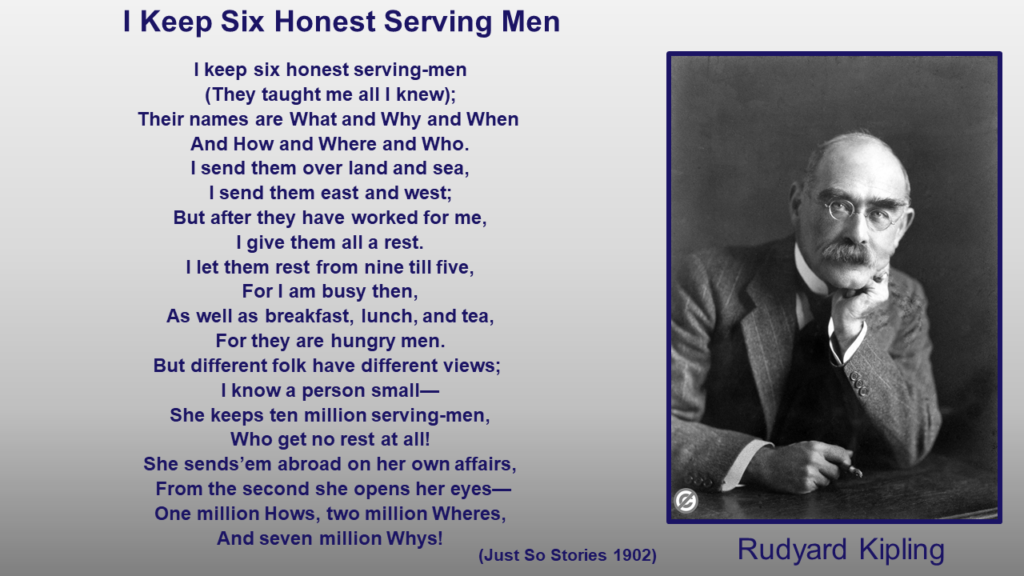
As Kipling, who also lived in an age of rapid change, acknowledges we are too busy getting things done to take the time to ask the appropriate questions.
However, that was not the case with his daughter Effie who had seven million Whys.
The 5 Whys
Sakichi Toyoda was born in a fast-modernizing Japan in 1867, the son of a farmer and skilled carpenter.
He possessed a lively and active mind, and although Kipling had yet to envision his six honest serving men, Toyoda rigorously utilized his to the full.
He constantly sought to invent machinery that would improve conditions for his country and its people.
In 1891 after much trial and error he perfected and patented a hand loom.
He travelled widely in his search for knowledge and continued to question and experiment.
This led to the development of a power loom which was marketed in 1896.
Still striving for improvement, he continued to develop his looms culminating in the 1924 Type G, which incorporated all the previous improvements and automation.
So impressive was this machine that the English company Platt Brothers, a world leader in the industry, signed a patent transfer deal with Toyoda in 1929.
Sakichi Toyoda died in 1930, but the companies he left grew into the modern Toyota Industries Corporation, which still enshrines his concepts and ideals.
He is credited with the creation of 5 Why’s system, which is still in use worldwide, although others credit Taiichi Ohno, who popularized it with his development of the Toyota Production System.
There are many books and websites giving detailed descriptions of the 5 Whys method, and its application, so I will be brief.
The 5 Whys allow us to marshal the services of one of our honest serving people, and channel the curious 5-year-old within us.
If we want to find the real cause of a problem rather than just the symptoms, we should ask Why 5 times (in practice it may be more or less).
Having established the real cause, we can address it and put in place measures to prevent it’s reoccurrence.
Below is an example from the Tay Bridge disaster, which was featured in previous posts.2
Although the rail company did not use this exact method, they did consider the benefits (ROI) of the bridge and the cost of the bad publicity. The next two bridges they built were engineered and built to a high standard, and still carry regular trains to this day.
Change
I want to touch briefly on the book “Change” by Richard Gerver. (I will return to the book in detail in a later post)
I acquired my copy purely by chance.
We were at Manchester airport waiting for our flight back to the US, having just attended the annual UK Quilling Conference in Liverpool.
Whilst browsing the bookshop I spotted a book with quilling artwork on the cover.
I called my wife over (she is the quiller) to show her, and she drifted off when she realized it was not about quilling. I read the outline of the book, bought it and was so engrossed that I finished it by the time I landed in the US. (I usually fall asleep as soon as I am fed).
I still have that dogeared, marked-up, coffee stained and bookmarked copy 8 years later.
If I could only have one book on change this would be the one.
Gerver was an innovative teacher and head teacher and is now a highly sought-after speaker and consultant.
The book is filled with anecdotes and advice, but it is not a prescriptive or a procedural oriented book, but one from a very human perspective.
You may be wondering what has this to do with Kipling or Toyoda?
It is a quote from the book which resonates with me and Kipling’s idea of The Six Honest Serving Men
Conclusion
The lives of the three men featured, two English and a Japanese, span over a century and represent widely varying backgrounds. However, all three recognized the inevitability of change, and the indispensable need to think, question and evolve.
All three represent Teddy Roosevelt’s man in the arena, and by their daring can help us find a path forward in uncertain times.
We need to find and rekindle that “sense of awe and wonder”, continually send out our six honest serving people, and become doers of deeds. More importantly we need to find a way to avoid educating that sense of awe and wonder out of our children, so that they are ready and equipped to carry forward an ever-advancing civilization
Lessons for Project Managers
As project managers we need to:
- Avoid getting caught up in the hurly-burly
- Allow yourself the time to think and question
- Do not give your six honest serving people a break
- Release your internal 5-year-old at work
NOTES:
1See: The story of Sakichi Toyoda.
2I am also available to speak on that and other topics.
BIBLIOGRAPHY:
- Just So Stories – Rudyard Kipling
- The story of Sakichi Toyoda – Toyota Industries Corporation
The Story of Sakichi Toyoda | Toyota Industries Corporation (toyota-industries.com)
- Change – Richard Gerver

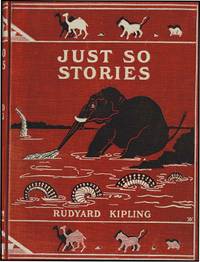

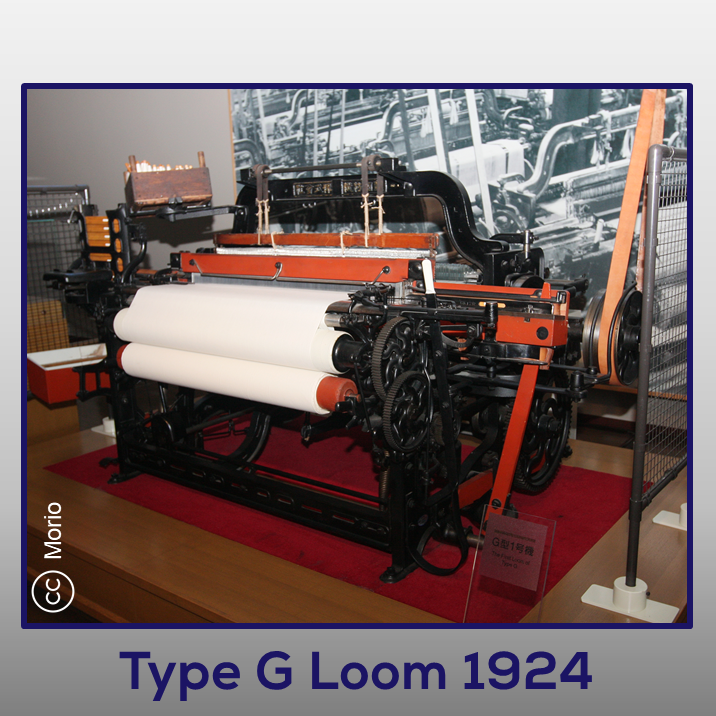
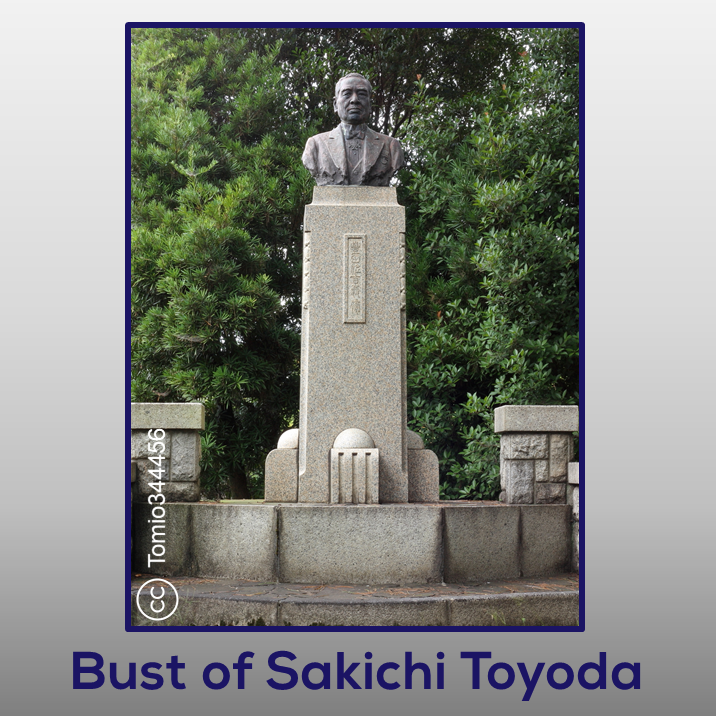
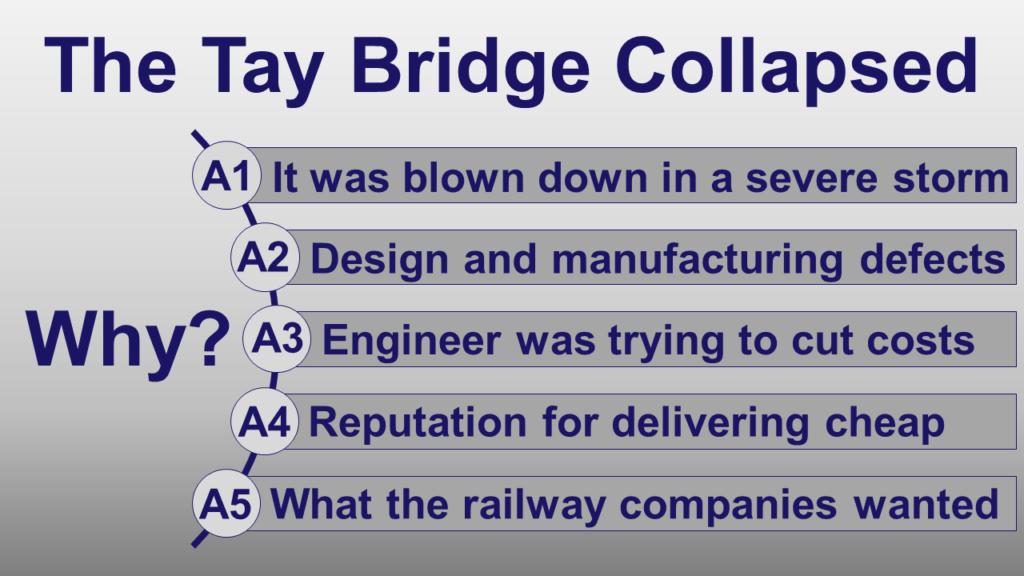

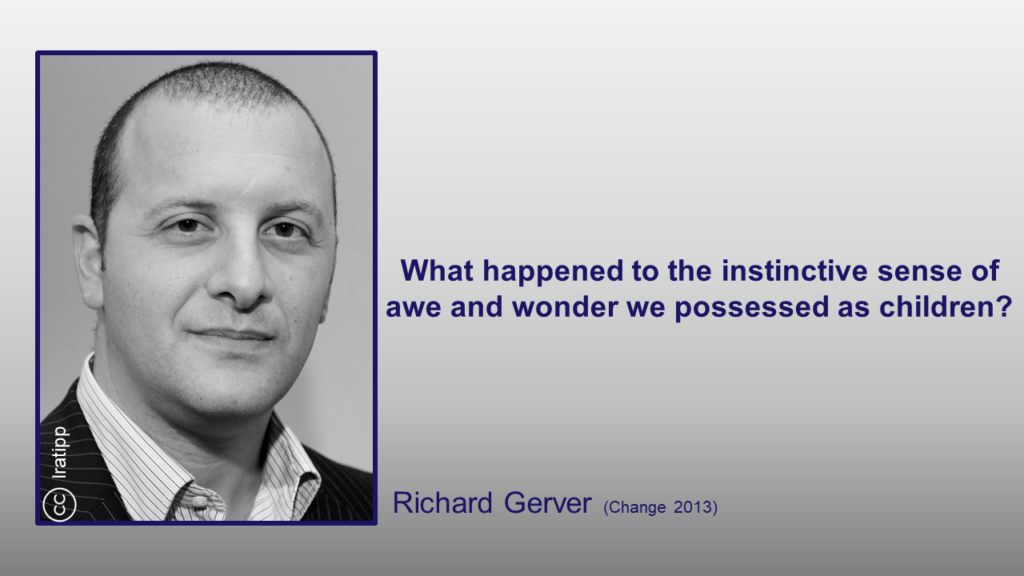
Yet another wonderfully engaging article.
Truly History and Project Management intersect in all your blog articles.
Keep them coming.
It was a pleasure meeting you at UH yesterday to discuss this post briefly. This post sparked something in me as it resonated with my goal to nurture than inner child. Especially as an engineer we can get lost in details and strict procedures to do things, so this is a good reminder to not just think but wonder.